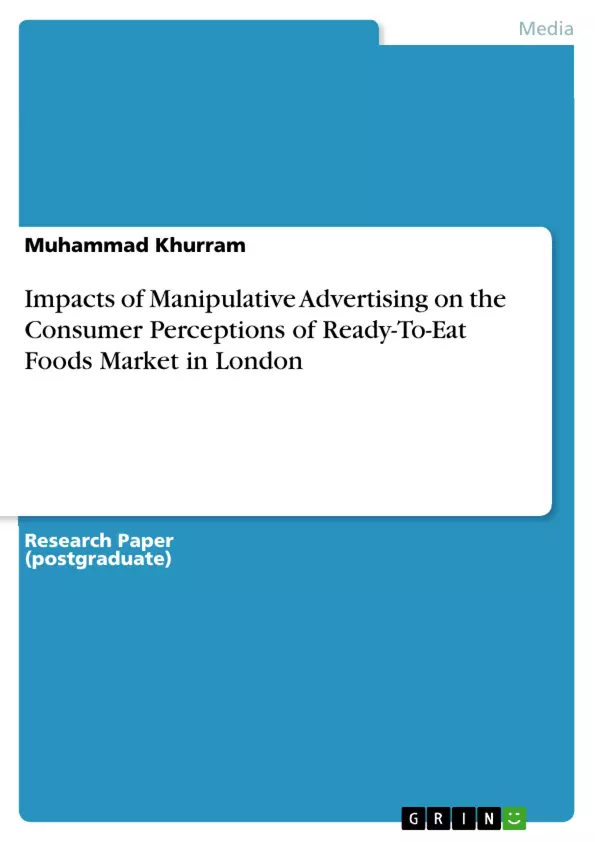An appeal of the consumers for ready to eat-RTE products is forecasted to grow fast in next five years because consumers are demanding more because of its convenient availability, premium quality, along with textural properties and exciting flavours (FMI, 2016). This sector achieves many milestones in recent years, for example, an extrusion technology was extensively used in producing RTE snacks or cereals because of operating ease and also the ability to create different shapes and texture that appeal to the eyes of consumers. However, several existing products of RTE are relatively higher in salt and sugar, hence, is considered as energy dense yet lack of nutrients in food. Nevertheless, some potential for manipulating exists in the nutritional status of RTEs through altering the potential of digestion of protein and starch, and also through the incorporation of some bioactive elements like dietary fibre. Thus, current observation and review of articles have explored many new types of research and studies in this area and illustrates many opportunities through which global industry of food could react actively to the requirements of consumers for the healthful snack of RTE products in future years. The consumer perceptions about the impact of advertisements on purchase behaviour are the vital field of research. The analysis will disclose the extent to which manipulative advertising is successful in portraying RTE foods as a healthy replacement of the home-cooked meal.
Table of Contents
- Executive Summary
- Chapter I- Introduction
- 1.1 Introduction
- 1.2 Background
- 1.3 Problem Statement
- 1.4 Research Aim and Objectives
- Research Questions
- 1.5 Significance of the study
- 1.6 Structure of the Thesis
- Chapter II- Literature Review
- 2.1 The importance of Advertising
- 2.2 Manipulative Advertising
- 2.2.1 Characteristics of manipulative Advertising
- 2.2.2 Manipulation in Food Advertising
- 2.3 Consumer perceptions of Advertising
- 2.4 The Consumer Buying Decision Process
- 2.4.1 Impact of Advertising on Consumer perceptions
- 2.5 Ready to Eat (RTE) market in UK
- 2.5.1 Key RTE Consumers' trends
- 2.5.2 Competitive Landscape
- 2.5.3 Prospects of RTE in UK
- Chapter 3: Methodology
- 3.1 Research Design
- 3.2 Research Philosophy
- 3.3 Research Approach
- 3.4 Research Strategy
- 3.5 Sampling
- 3.5.1 Respondents of the study
- 3.5.2 Sample Size
- 3.6 Data Collection
- 3.6.1 Secondary data
- 3.6.2 Primary Data
- 3.6.3 Questionnaire
- 3.7 Analysis of Data
- 3.8 Ethical Considerations
- Chapter IV- Data Analysis
- 4.1 Analysis of collected data
- 4.2 Consumers Personal Information
- 4.3 Consumer trends of RTE Foods
- 4.4 Perceptions of RTE Advertisements
- 4.5 Summary of Research Findings
- Chapter V-Conclusion and Recommendations
- 5.1 Conclusion
- 5.2 Recommendations
- References
- Appendix - QUESTIONNAIRE
- A. Reflective Statement
- B. Contextualisation Statement
Objectives and Key Themes
This research project investigates the impact of manipulative advertising on consumer perceptions of the Ready-To-Eat (RTE) food market in London. It aims to understand how manipulative advertising techniques are employed in the RTE food sector and their influence on consumer purchasing behaviour. The research utilizes a quantitative approach, employing a carefully designed survey to gather data directly from consumers in London. The study further explores the growing RTE food market in the UK using both primary and secondary data.
- The impact of manipulative advertising on consumer perceptions of RTE foods.
- Consumer decision-making processes and their susceptibility to manipulative advertising.
- The role of ethical advertising practices in the RTE food market.
- Analysis of consumer preferences and concerns related to RTE food brands and advertising.
- The importance of accurate product information and nutritional transparency in RTE food advertising.
Chapter Summaries
Chapter I provides an introduction to the research topic, outlining the background, problem statement, research aims and objectives, research questions, significance of the study, and the structure of the thesis. It highlights the role of marketing communication, advertising, and consumer needs in business strategies, emphasizing the potential impact of manipulative advertising on consumer decisions.
Chapter II delves into the literature review, examining the importance of advertising, the characteristics and implications of manipulative advertising, particularly in the food sector. It further explores consumer perceptions of advertising, the consumer buying decision process, and the impact of advertising on consumer perceptions. It also explores the Ready to Eat (RTE) market in the UK, including key consumer trends, the competitive landscape, and the future prospects of the RTE sector.
Chapter 3 details the methodology used in the research, including the research design, philosophy, approach, strategy, sampling techniques, data collection methods (both primary and secondary data), data analysis techniques, and ethical considerations.
Chapter IV focuses on the analysis of collected data, examining consumer personal information, consumer trends in RTE foods, perceptions of RTE food advertisements, and summarising the research findings.
Keywords
The research focuses on the impacts of manipulative advertising, specifically within the context of the Ready-To-Eat (RTE) food market in London. The study explores consumer perceptions, decision-making processes, and the role of ethical advertising practices in this sector. Key themes include manipulative advertising techniques, consumer behaviour, food advertising, RTE food market trends, and ethical considerations in marketing.
- Quote paper
- Muhammad Khurram (Author), 2018, Impacts of Manipulative Advertising on the Consumer Perceptions of Ready-To-Eat Foods Market in London, Munich, GRIN Verlag, https://www.grin.com/document/489410



